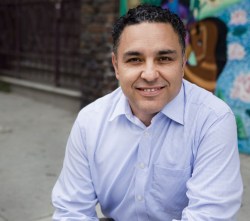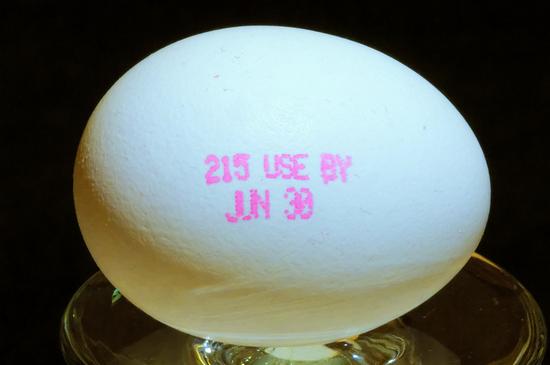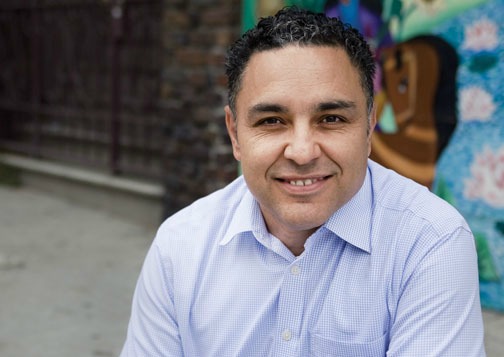
Luca SartoniChristina Ruiz launched San Francisco’s first “fashion truck” with help from a loan from the Mission Asset Fund.
Christina Ruiz and Helen Ochoa don’t seem to have much in common. Ruiz is a stylish, photogenic fashion school grad who owns and operates TopShelf Boutique, San Francisco’s first fashion truck. Ochoa is a single mother of three, an immigrant from Guatemala who lacked a credit score and struggled for years to find a decent apartment for herself and her children. But their differences are not so vast as they seem. Before she opened TopShelf, Ruiz, too, was financially flailing, suffering from a bad credit score that prevented her from financing her mobile shop. Without access to traditional loans or credit, both women turned to the same place to realize their dreams: San Francisco’s Mission Asset Fund.
The Mission Asset Fund is like a financial version of a potluck dinner: Everyone contributes something of their own, but each individual also benefits from what everyone else brings to the table. Its most popular financial product, “lending circles,” formalize the peer-to-peer lending practices common in low-income and immigrant communities. Members of a lending circle contribute small monthly amounts to a common pot, which is then loaned to a member in need. The borrower makes payments on the loan just like he or she would a bank loan, only there’s no interest or fees.
Borrowers are held accountable by the community — lending circles often include friends and even family members, so the power of peer pressure ensures timely payments. Mission Asset Fund reports the payments to credit bureaus, allowing borrowers to build credit histories and win access to traditional loans. According to the fund, the credit scores of lending circle participants have increased by an average of 49 points through the program.
 And if someone doesn’t pay it back? Well, it doesn’t happen. When a borrower is struggling with payments, Mission Asset Fund sets him or her up with intensive one-on-one financial counseling and resets their payment schedule. So far, the approach has worked every time: Spokesperson Tara Robinson says the lending circles’ repayment rate stands at 100 percent.
And if someone doesn’t pay it back? Well, it doesn’t happen. When a borrower is struggling with payments, Mission Asset Fund sets him or her up with intensive one-on-one financial counseling and resets their payment schedule. So far, the approach has worked every time: Spokesperson Tara Robinson says the lending circles’ repayment rate stands at 100 percent.
The program is similar in philosophy to Bangladesh-based Grameen Bank, founded by Nobel Peace Prize winner Muhammad Yunus and a pioneer of offering microcredit to the poor, as well as recent American peer-to-peer lending programs like Prosper and Lending Club. While the latter two for-profit companies charge interest and require borrowers to meet certain credit standards, the basic goals — cutting out the Wall Street middlemen and leveraging the power of human interconnectivity to promote broad financial health — is shared by all.
The origins of the Mission Asset Fund are as distinctive as the people it serves. In the early 2000s, Levi Strauss — yep, the jeans people — closed its factory in San Francisco’s Mission district. The factory had opened in 1906, shortly after a major earthquake devastated the city, and for nearly a century it helped propel the hometown apparel company into a worldwide brand. Because of Levi’s close ties to, and deep history in, the city, it decided to do something unusual at the plant’s closure: The Levi-Strauss Foundation donated $1 million to support the predominantly Hispanic community of the Mission. A board of foundation members and local activists deliberated for several months over how best to utilize the funds, until they hit on the idea of a financial nonprofit.

Hayley DurackJosé Quiñonez.
The fund’s executive director, José Quiñonez, knows well the difficulties facing new immigrant families: He came to the United States from Mexico as an undocumented child, a prototypical candidate for the DREAM Act. Quiñonez earned his green card in the amnesty program of 1987 and, with papers in hand, went on to earn a bachelor’s degree from the University of California-Davis, then a master’s degree from Princeton.
With Quiñonez at the helm, the Mission Asset Fund has been able to tailor its financial products to new immigrants, including setting up lending circles specifically to cover the costs of applying for U.S. citizenship.
“Individuals that don’t have access to the financial mainstream — people who don’t have access to banks or credit unions — they basically have to create that access for themselves,” explains Quiñonez. “Social loans are traditional loans that people make with each other, they’re very traditional in immigrant communities, but those loans never get recorded or reported to the credit bureaus.” Until now.
In addition to the seed money from the Levi-Strauss Foundation, the fund has found support from a range of both institutions and individuals, including numerous mainstream financial institutions that don’t always serve the needs of low-income communities. “We get referrals from local banks,” says Robinson. “They see us as part of a continuum.”
The Citi Foundation, an offshoot of Citibank, embraced the Mission Asset Fund after officials realized their own financial literacy classes were less effective than they’d hoped. The fund recently received a $200,000 Neighborhood Builders Award from Bank of America.
Because of the loans they received from the Mission Asset Fund, both Christina Ruiz and Helen Ochoa were able to turn their lives around. Ruiz’s TopShelf Boutique has been featured in Conde Nast Traveler, on the cover of the San Francisco Examiner, even in American Airlines’ American Way magazine. She says her truck — which really resembles a hip boutique on the interior, filled with brightly colored, ultra-trendy, moderately priced apparel — offers customers “an alternative to crowded malls and other traditional shopping experiences.” (There’s also something inherently awesome about buying clothes out of a truck.)
As for Ochoa, the single mother who couldn’t find a safe and healthy apartment for her kids — well, after participating in a lending circle and taking some personal finance classes, she was able to put together both a deposit and a credit score that finally landed her a decent place. Instead of the disruptions of frequent moves or mold-borne illness, her three children have a place to study, play, and grow.
“I didn’t know anything,” Ochoa says in Spanish. “Now I have a high credit score. For me, it’s changed my life. All of it.”



